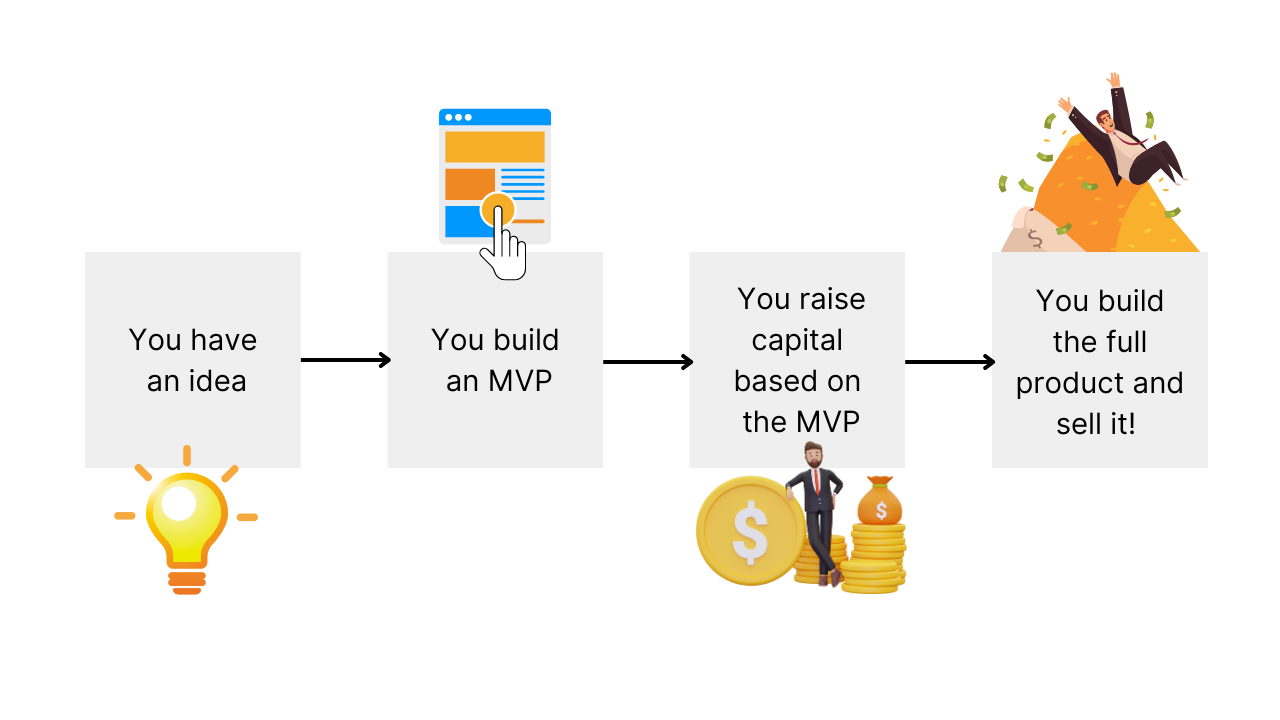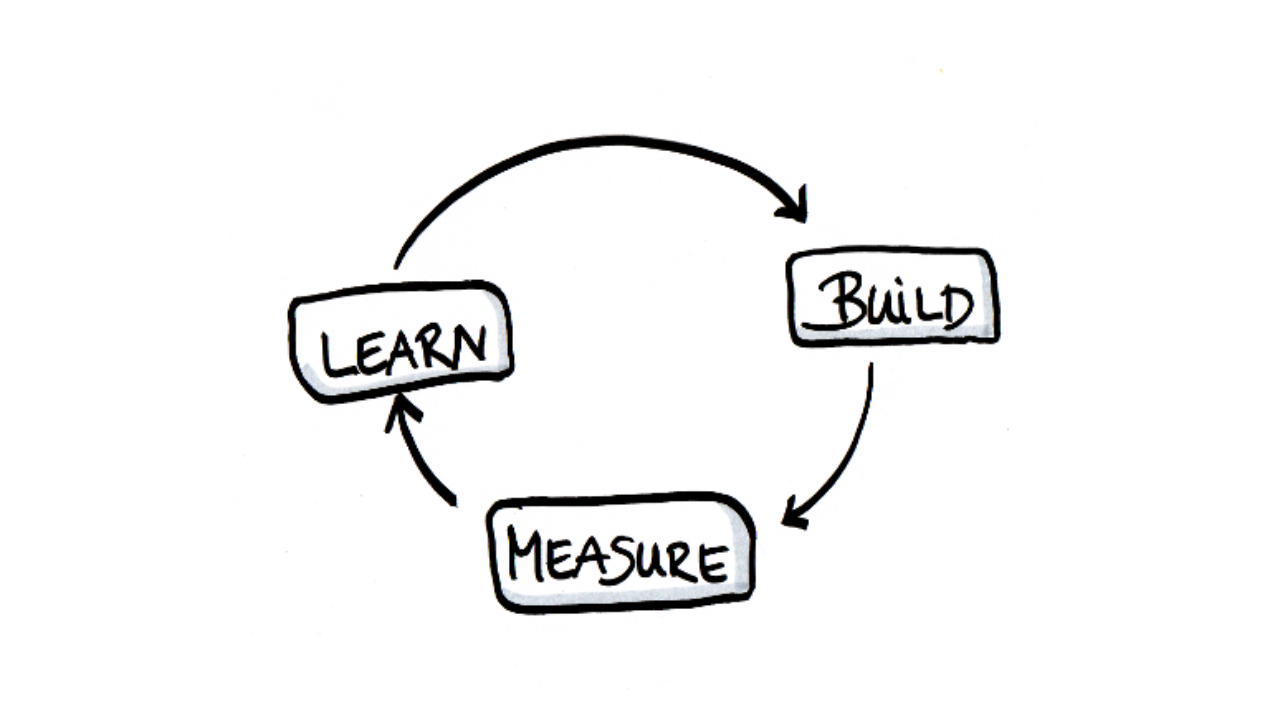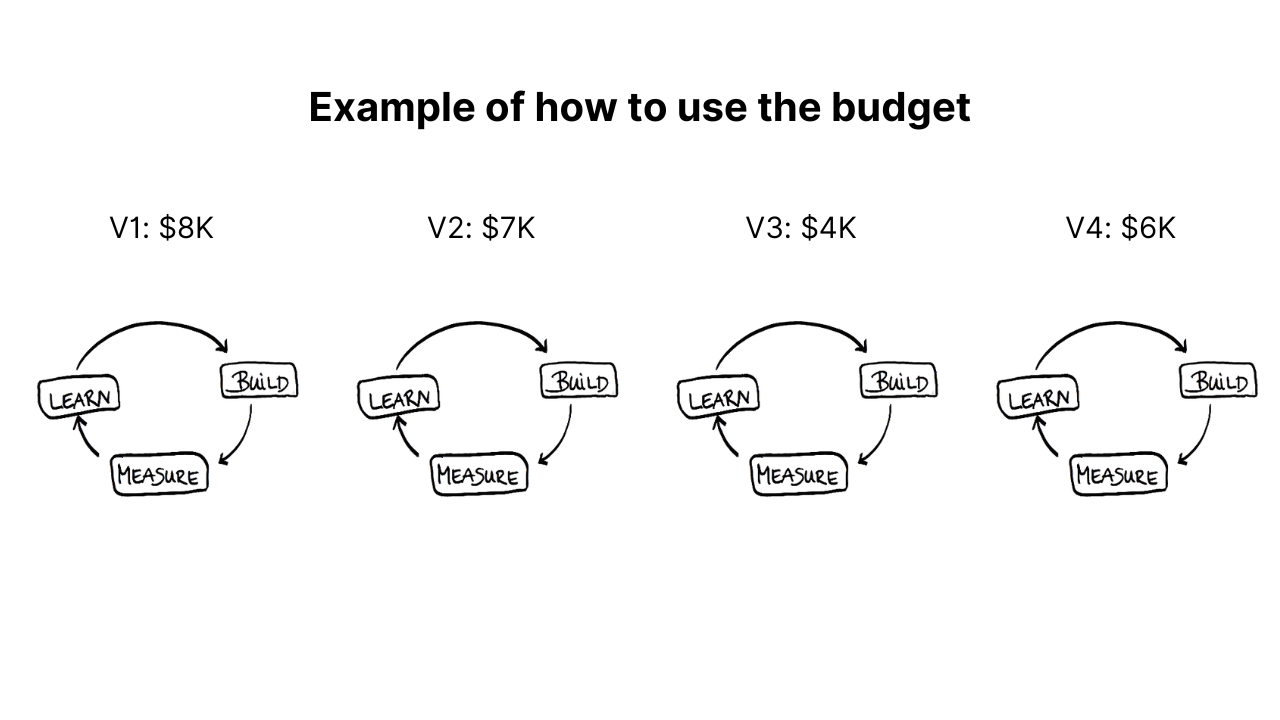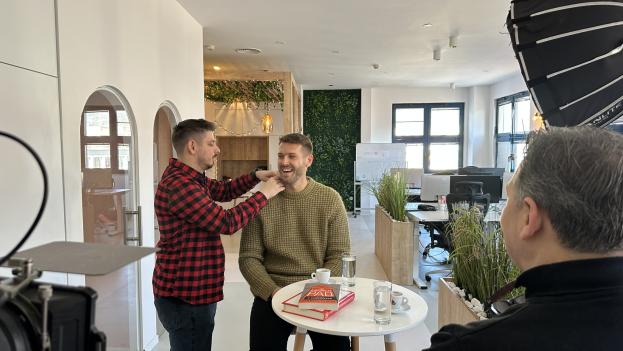So.. here we are, you have an idea for a software solution, you’re excited about it.
If you have any connection at all with the IT industry, someone has probably already told you that you should start by building a so-called MVP (minimum viable product).
This won’t cost you too much money as it’s a scaled down version of the app with only essential features, but once you build it, you’ll be able to sell it, or if you’re in a hurry, raise capital from investors based on that prototype.
With that new money, you will then be able to build the full scale version with all the features you imagined, and create a successful company.

So, you figure, I have some money to build this MVP, let's for example say a $25,000 budget.
You now contact an agency and say, I have $25,000 dollars to build an MVP, and here is my requirements specification.. Can you build this for me?
Traditional agencies will break down your requirements, and see how many of the features they can squeeze in for that $25,000, call it the MVP together with you, and give you a proposal.
If you’re happy with the proposal, you accept, and you’re off to building.
WRONG!
The core problem here is that when someone says; build me an MVP (Minimum Viable Product) it implies that they already know what’s viable for the targeted audience.
But the reality of new products is that no matter how much you think your new idea is amazing, you don’t know if it will be adopted by the users.
It’s not we who build it that decide if it’s a Viable, it’s the target audience using it.







